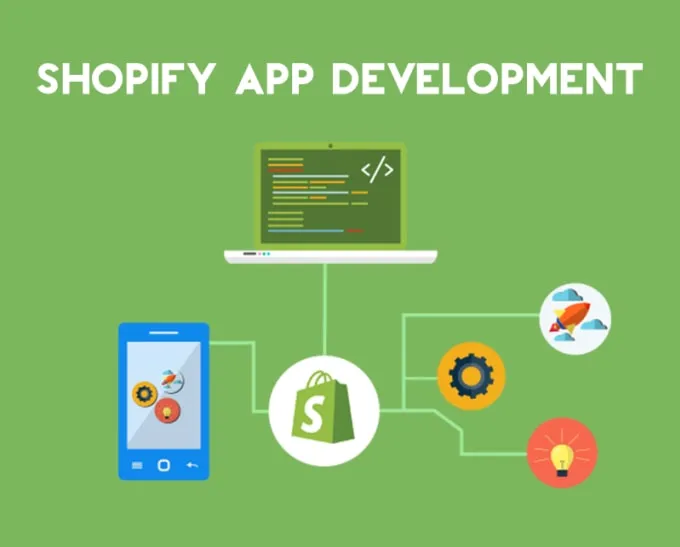As the e-commerce landscape evolves, Shopify remains a dominant force, thanks to its robust ecosystem and extensive app marketplace. Developing a Shopify app can be a lucrative opportunity, providing valuable tools and integrations for Shopify store owners. In this blog, we’ll explore the essentials of Shopify app development, including why you should develop apps for Shopify, getting started, key considerations, and best practices.
1. Why Develop a Shopify App?
1.1 Growing Market Demand
Shopify’s user base has grown exponentially, and the platform now powers millions of merchants worldwide. This growth translates to a high demand for apps that enhance functionality, improve user experience, and solve specific business problems.
1.2 Lucrative Revenue Streams
Developers can monetize their apps through one-time purchases, subscriptions, or commissions. With the Shopify App Store, you have access to a global market of merchants looking to invest in solutions that add value to their stores.
1.3 Flexibility and Innovation
Shopify’s platform provides robust APIs and development tools, allowing you to build anything from simple integrations to complex applications. This flexibility fosters innovation and enables you to create unique, impactful apps.
2. Getting Started with Shopify App Development
2.1 Setting Up Your Development Environment
Requirements:
- Shopify Partner Account: Register as a Shopify Partner to gain access to development tools and resources.
- Development Store: Create a development store through your Partner dashboard to test your app without affecting a live store.
- Programming Knowledge: Familiarity with web development languages such as JavaScript, HTML, and CSS is essential. Knowledge of backend technologies like Node.js or Ruby on Rails is also beneficial.
Tools:
- Shopify CLI (Command Line Interface): Facilitates app development and testing.
- Shopify Admin API and GraphQL API: Use these APIs to interact with Shopify stores and fetch/store data.
- Ngrok: Allows you to create secure tunnels to your local server, enabling testing of your app with Shopify.
2.2 Understanding Shopify App Types
Public Apps: Available to all Shopify merchants through the Shopify App Store. They require a robust development process, including review by Shopify.
Private Apps: Custom apps for a specific store. They are not listed in the Shopify App Store and are ideal for bespoke solutions.
Custom Apps: Developed for a specific merchant without going through the app review process. They provide the flexibility of private apps with a simpler distribution model.
2.3 Initial Development Steps
- Create a Shopify Partner Account: Sign up at the Shopify Partner Program.
- Set Up a Development Store: Use the Partner dashboard to create a test store.
- Install Shopify CLI: Follow the installation guide in the Shopify CLI documentation.
- Create Your App: Use Shopify CLI to scaffold a new app project. For example, run
shopify app createin your terminal.
3. Key Considerations in Shopify App Development
3.1 App Functionality
Your app should solve a real problem or provide significant value to merchants. Conduct market research to understand the needs of Shopify store owners and identify gaps in existing app offerings.
3.2 User Experience
Focus on a seamless and intuitive user experience. Merchants should find your app easy to use, with clear navigation, concise instructions, and a visually appealing interface.
3.3 Security
Security is paramount. Ensure your app follows best practices for data security, including encryption, secure API communication, and adherence to Shopify’s security guidelines.
3.4 Performance
Your app should be performant and efficient. Optimize your code to ensure fast load times and minimal impact on store performance.
3.5 Compliance
Ensure your app complies with Shopify’s App Store requirements. Non-compliance can result in rejection or removal from the app store.
4. Best Practices for Developing Shopify Apps
4.1 Follow Shopify’s Design Guidelines
Adhere to Shopify’s Polaris design system to ensure a consistent and cohesive user experience across all Shopify apps.
4.2 Use Modern Technologies
Leverage modern development frameworks and tools, such as React for the frontend and GraphQL for data querying. These technologies help build efficient, maintainable, and scalable apps.
4.3 Test Extensively
Thoroughly test your app in different environments and scenarios. Use tools like Jest for unit testing and Cypress for end-to-end testing.
4.4 Provide Clear Documentation
Offer comprehensive documentation, including installation guides, usage instructions, and troubleshooting tips. Good documentation improves user adoption and reduces support requests.
4.5 Offer Excellent Support
Provide timely and helpful support to your users. An efficient support system, including FAQs, email support, and live chat, enhances user satisfaction and retention.
5. Submitting and Marketing Your Shopify App
5.1 App Submission
Submit your app to the Shopify App Store through the Partner dashboard. Ensure your app meets all submission guidelines and undergoes rigorous testing before submission.
5.2 Marketing Strategies
Optimize App Listing: Write a compelling app description, use high-quality images, and include a video demo if possible.
Leverage Social Media: Promote your app on social media platforms and engage with the Shopify community.
Content Marketing: Create blog posts, tutorials, and case studies showcasing how your app solves specific problems or enhances store functionality.
Customer Reviews: Encourage users to leave positive reviews and testimonials, as these can significantly impact your app’s visibility and credibility.
Developing a Shopify app offers an exciting opportunity to contribute to the e-commerce ecosystem and generate revenue. By understanding the development process, focusing on functionality and user experience, and following best practices, you can create a successful app that stands out in the competitive Shopify App Store. Start your journey today, and make a meaningful impact in the world of e-commerce!


